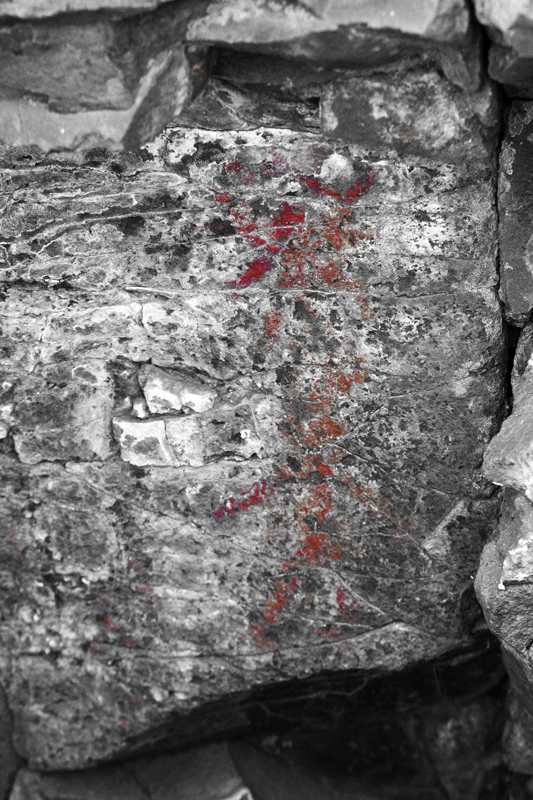(Note: clicking on images should display a larger version)
Graffiti.
Sometimes it’s just a signature – a tag.
Sometimes it’s a message.
And sometimes, it’s art.
Graffiti on a train
Sad thing is…I can’t tell the difference…at least not always.
Why do we post symbols in public places?
What does a bird mean?
Without proper cultural context…
...can we ever know the original intent of the symbol maker?
I stumbled upon my first pictograph on a kayak/camping trip in 2008.
It’s amazing that these painted images persist.
Is it a message?
An advertisement?
An icon?
...a warning?
Since then I’ve read some Oregon Archeological Society publications (primarily by Keyser) and learned of vision quests, shamans, ghost cults and power drawings. Plus, on the historical context side of the story, I’ve learned that these kinds of painted rock images are the product of a once dominant society that was being decimated by disease and European pioneers.
J. Malcolm and Louise Loring surveyed petroglyph and pictograph sites over the course of decades and documented their research in a two volume monograph called Pictographs and Petroglyphs of the Oregon Country. The Lorings painstakingly drew the images from over three hundred sites and also included cryptic descriptions (well, at least cryptic to me) of their locations.
Last year I went looking for Site 15.
The red arrow shows J.S. scanning the cliffs for pictographs/petroglyphs.
Out in the field, you start asking yourself, “If I was an Indian, where would I paint a picture?”
Then you start asking, “Why would I paint a picture?”
And then when you see where some of the pictures are painted, you start asking, “How?”
While I did find inconclusive scratched images…
…I didn’t find any evidence for Site 15.
…and I didn’t really feel shortchanged.
A couple weeks ago, an internet acquaintance (S.E.) sent me a photo he discovered while out in his kayak. It matched one of the Loring drawings for site 15.
Game on.
There’s a lot of beauty amongst towering basalt cliffs and canyons.
There are peaceful shelters…
Clefts in the rock…protection from high winds, driving rain and desert sun.
From a precarious perch – a bird’s eye view of the vast Columbia River gorge.
Surreal landscapes featuring rows of unlikely columns.
How did this environment influence the artists?
My search took me into terrain where it appears…
…others have not been so lucky.
Finally, the tell-tale smudge of red.
Many of the paintings seem worse for wear when compared to the Loring drawings…to the degree that my identifications are not always certain.
By now I feel like an idiot. The same symbols repeated over and over again, and I keep going, “What does it mean? I don’t get it. What does it mean?”
Meanwhile, local inhabitants express, by their actions, a desire to enter into a parasitical relationship.











































Pretty fantastic!
ReplyDeleteThis morning I came into work and found similarly perplexing markings on my overhead garage door. I suspect that at least some of the drawings you're showing were made by an ancient mischievous little prick that was thinking "someday someone will see this and ask 'what's that and how the hell did it get way up here?'" I'm just venting I guess. Nice pictures though.
ReplyDelete